Busting 7 Common Design & Decorating Myths

Today we're going to be looking at some of the most common design and decorating myths, and then we're going to bust them. Remember, you're free to do whatever you want in your own home, but if you're going to follow someone's advice, make sure it's actually good advice.
Decorating myths
1. Small rooms shouldn't be dark
The common advice with small rooms is that you should paint them all white. This is so that the white paint can reflect as much light as possible, and consequently, make the room seem bigger.
Logically, this makes sense, and it is an option for small rooms. But what these die-hard white paint people don't know is that dark paint can also actually make small rooms appear larger, just in a different way.
Instead of the light being reflected, it appears larger through depth.
If you look at a small room that's painted dark, you'll begin to notice that the walls and corners appear to blur into the shadows.
If you're craving a cozy and intimate feeling in your little room, dark paint could very well be your answer.
Don't let other people's opinions or limiting beliefs stop you.
2. Low-light rooms should be white
Here's another myth tied to white paint. You'll often hear people say that if you have a dark room, then you should paint it white in order to make it brighter.
This again is not true. It's a really bad idea.
If you don't have a lot of natural light coming in, and you choose white paint, your walls are going to struggle to reflect the little light that there is.
As a result, your white paint is going to turn into a dingy, boring, flat, primer-like shade that isn't going to do anyone any favors, least of all your room. The only way you can bring more light into a room is by adding a window or a skylight, adding more light sources, or using big mirrors.
Any designer worth their salt will tell you that if you don't have a lot of natural light, the best thing to do is to paint your room a neutral color that has a bit of a tint to it and steer clear of white.
3. House plants purify the air
This is one of those things that people love to mention. I'd be willing to bet every single person has heard at least once that houseplants purify the air.
The confusion stems from the NASA Clean Air Study that was done in 1989. It's not that plants don't purify the air at all, but the study was oversimplified.
Further studies were done, including one published in the Journal of Exposure Science and Environmental Epidemiology. The authors state a home with 1,500 square feet of space would require 680 plants to effectively purify the air. So if you're looking to purify your air, you're better off just opening the windows or buying an air purifier.
Now that's not to say that plants don't have their benefits; they do.
They help to boost your mood and they can make a space feel more lively, but when it comes to purifying the air, they're not actually doing anything. Myth busted.
4. The ceiling has to be white
This could not be further from the truth.
Your ceiling is the fifth wall in your room, and it deserves just as much attention as the other four. In fact, you should be as discerning with your ceiling color as you are with your wall colors.
If you want to make a statement, go ahead and paint your ceiling something bold and beautiful.
I guarantee it will make a big impact on the room.
5. Don’t mix metals
This is a common misconception that came from some silly, old-fashioned rule that silver and gold shouldn't be worn together, and this translated into the home.
Having all one metal throughout the home, or even in a single room, can often lead to a very one-dimensional and dated look.
So yes, you can absolutely mix metals in your home. It's a great way to add visual interest to a space, in fact.
That doesn't mean that you should go wild and get six different randomly mismatched metals and chuck them together.
Like with everything in good design, there always has to be thought and intention behind your decisions.
6. Never paint original woodwork
I don't know how many times I've seen people crucifying someone for painting the original woodwork in an old home.
Sometimes, the original woodwork is in really bad shape, and it's beyond saving. In that case, painting is the only option.
Also, some people just don't like living with dark wood trim, so ultimately, it's the homeowner's decision.
7. You can't place an area rug over a carpet
I always see this question: I have carpet, can I still use a rug in my space? And my answer is always, why not? Of course, you can. Of course. You can place an area rug over the top of the carpet.
There are certain designers who don't approve of doing it, and that might be why there's this idea that it can't or shouldn't be done. I'm not sure, but it can be done.
Some reasons why you might want to use an area rug over carpet are if you need to cover stains, you're renting and the carpet isn't to your taste, you want to add some color, pattern, or texture, or you're just trying to create zones within a room.
Decorating myths
While elements of design are important, decorating is a very personal experience. If you choose what you love, you will always feel at home.
Let me know in the comments section if there are any other decorating myths that drive you crazy like the ones I mentioned above. What is it about these myths that make you want them to go away for good?
































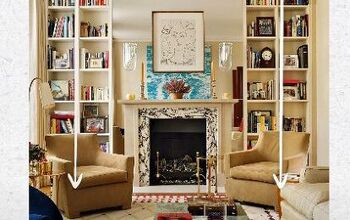


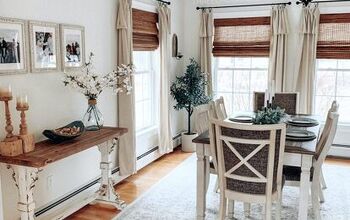
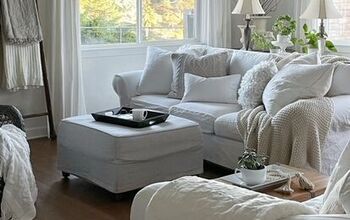

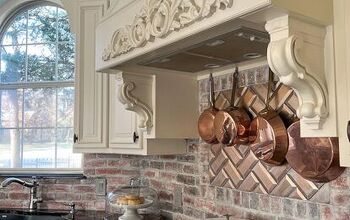


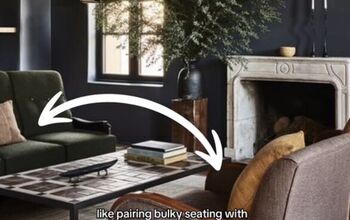
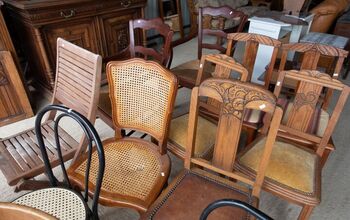
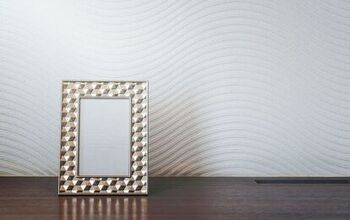





Comments
Join the conversation